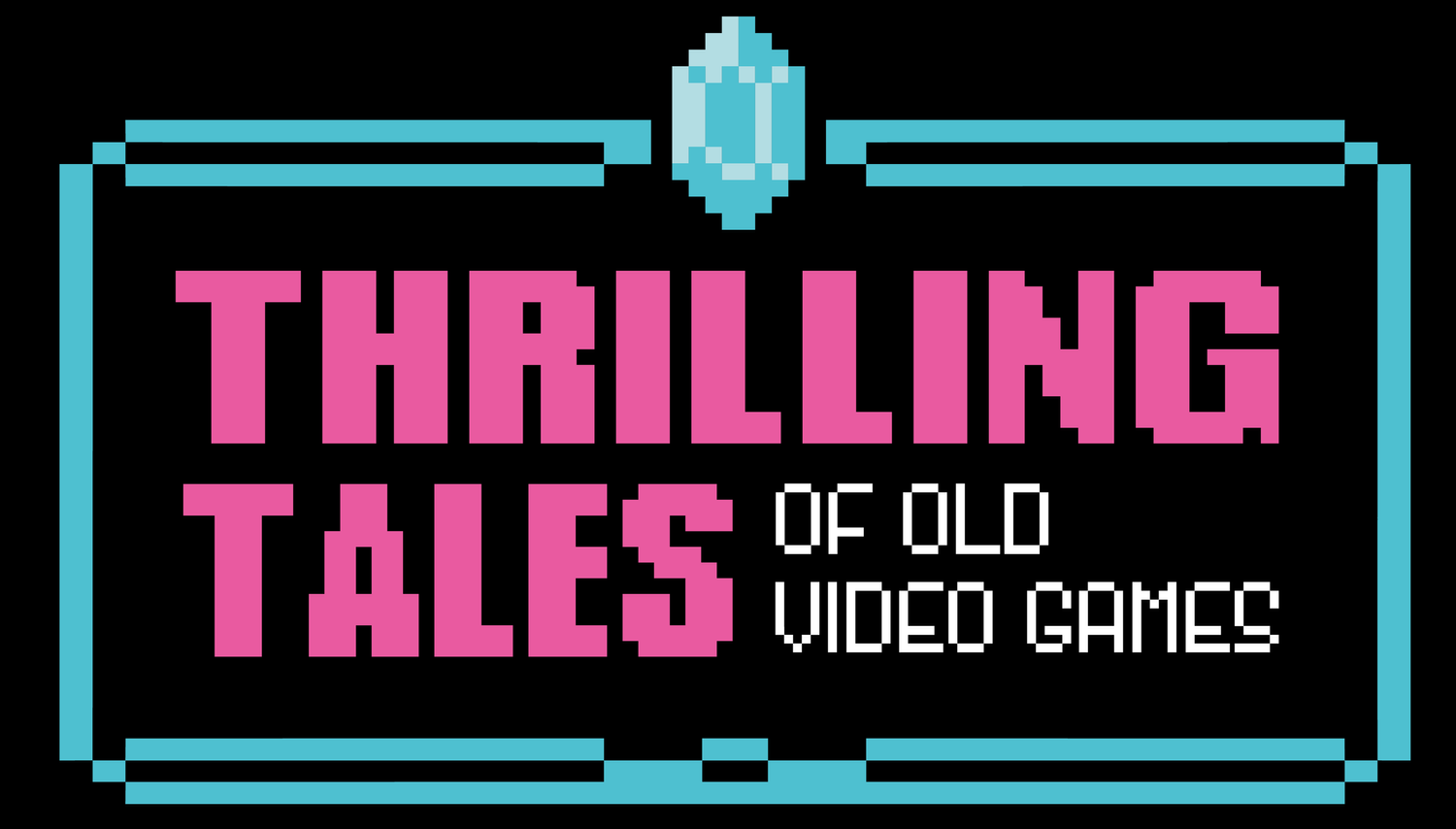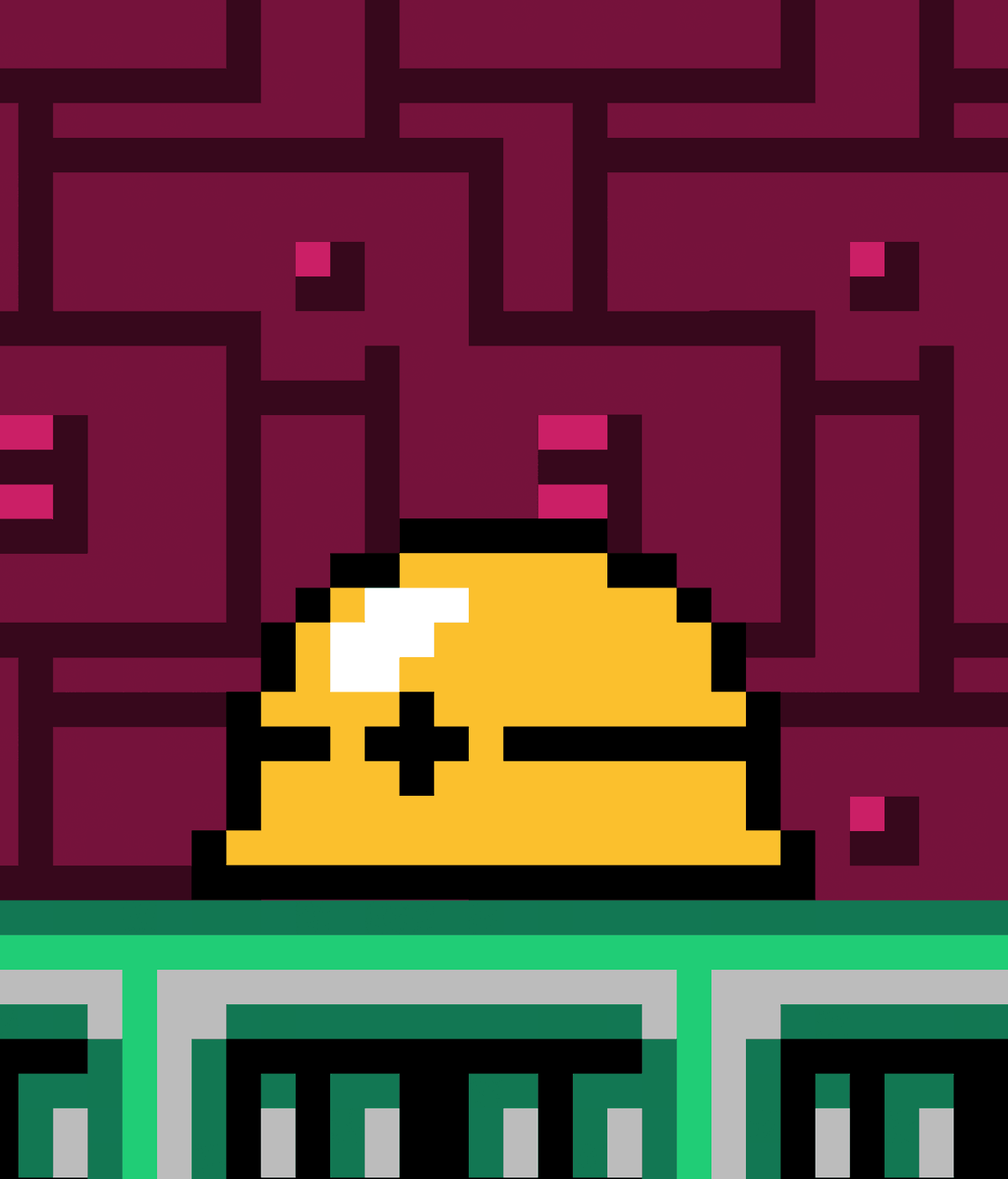Hard Hats in the Mushroom Kingdom
Sometimes things are a lot like other things! This is one of these — and despite the thumbnail image telling you that there is some Mega Man content here, this is, alas, also a Mario-related post.
In an early post on this site, I wrote about Pac-Man’s name and the urban legends surrounding it, and one of the discoveries I made in researching this was that Pac-Man actually had a lot in common with the Piranha Plant from Super Mario Bros. Both are essentially sentient mouths that interact with the world by chomping, and both of their names come from this fact. Pac-Man’s name comes from the Japanese pakupaku (ぱくぱく, “opening and closing,” especially if a mouth is doing it) and the Japanese name for the Piranha Plant (Pakkun Flower, パックンフラワー) comes from a related term, pakkunucho (ぱっくんちょ, “eating in one bite”). In short, they look similar, they act similar, and their names reflect this, but I’d never noticed despite being aware of both Pac-Man and Piranha Plants for decades.
There are probably multiple examples of this kind of convergent evolution in video games, and today I want to write about one that links the Met, an iconic enemy from the Mega Man games, to a familiar enemy from the Super Mario series.
I got a Playstation 5 for Christmas, and the first game I played on it is Street Fighter VI. Like all franchises must be these days, this game is steeped in nostalgia for its own history, but it also has some references to Capcom series beyond Street Fighter. For example, I was pleasantly surprised to see that Mets show up — not in-game, exactly, but as a design element in the world of the game.
Mega Man Mets in Street Fighter VI. Does my avatar look like Metro City’s beefiest accountant? Yes. Yes, he does.
If you’ve played any of the classic Mega Man games, you probably remember the Mets. They’re basically sentient ambulatory hard hats that deflect Mega Man’s shots. The only way to kill them is to wait until they peek out from beneath their hat, in which case you can take them out with a single shot. They debuted in the first Mega Man game — in Guts Man’s construction-themed stage, hence the hard hats that they’ve retained in every subsequent appearance — and they have taken on many various forms in later games.
A Mega Man 2-era Met. (In Mega Man 1, they didn’t have feet.)
That name, Met, is a truncation of the original Japanese name, and it’s unique in that it’s one of the few inventions by the localization to stick throughout the series. (Among the many ditched elements mentioned in the English manual is the fact that the game is set in Monsteropolis, which I don’t think is ever mentioned again.) The original Japanese name for this enemy, メットール or Mettōru, gets rendered in English in all manner of ways: Metool, Mettor, Metall and Mettaur, with the last one being what Capcom has apparently decided on as the official rendering for this character’s name outside Japan.
Despite what you might guess, given the Mega Man series’ fixation on music-related names, Mettōru is just a description of what the character is: “all helmet.” In 2012, Capcom posted an interview with Capcom designer Naoya “TOM-PON” Tomita in which he took credit for naming a lot of Mega Man characters, even coming up with the idea that the heroic robots should all be named after musical terms. In this video, he explicitly says that the Met’s Japanese name is a combination of the second syllable in helmet and the English word all. So… all helmet. Which is basically what they are.
Tomita doesn’t say if he was influenced by Super Mario Bros. in making this choice. In that game, which hit shelves two years before the first Mega Man did, one of the generic baddies Mario encounters, Buzzy Beetle, has a lot in common with the Met. It can’t be hurt by fireballs because they’re absorbed by its shell, which is designed to look dark and shiny and altogether different from the turtle shells that are more commonplace in the game. This creature’s Japanese name is メット (Metto), which is basically just the “helmet” portion of the Met’s Japanese name. And this makes sense, because for both characters, the defining characteristic is a hard, helmet-like shell that makes them difficult to kill.
Go, Buzzy, go! (In actual game play, Buzzy Beetle is not this high-energy.)
Apparently メット can be an abbreviation for helmet, so I’m more inclined to think this is a case of parallel thinking, where two different creative teams wanted to make enemy characters that would be unfazed by firepower. As a result, both teams ended up being inspired by helmets. With the Mega Man character, it’s a construction hard hat and with the Super Mario Bros. character, it’s something that’s more like the helmet that you’d wear with a suit of armor.
I thought that was enough of a connection to warrant a post, but in looking into Buzzy Beetle, I realized a surprising difference in how this character is viewed in Japan versus how it’s viewed almost anywhere else.
Looking at its description in the Japanese version of the guide, there’s no mention of it being an insect. That only comes in the English localization, where the people in charge apparently saw the shiny, black shell this enemy has and assumed it had to be a beetle. Now, beetles do have shells, in a sense. Their inner wings, which they use to fly, are protected by a pair of harder, outer wings, called elytra, which is a term that should be familiar to Minecraft players. But they don’t have helmet-like shells the way turtles do.
In the way that Spiny is a specialized Koopa that has spikes on his shell to prevent Mario from stomping on him, Buzzy Beetle is just a specialized Koopa that’s immune to fireballs and was given a glossy, reflective-looking shell that was a tipoff to players that they wouldn’t be able to dispatch him with firepower. If you look at the way Nintendo renders these characters today, it’s clear that Buzzy Beetle has the same beaky muzzle and yellow skin that all the turtle characters have. They’re turtles, not beetles. But the English name has persisted nonetheless.
Buzzy Beetle (not actually a beetle) per New Super Mario Bros. U.
The entry in the Perfect Edition of the Great Mario Character Encyclopedia makes it clear that the Japanese creators saw this character as a turtle.
In addition to classifying Buzzy Beetle/Metto as part of the turtle clan (カメ族), it also notes that it has “a shell that is harder than those of other turtles,” making it also a turtle. Full translation to come!
To summarize: Buzzy Beetle has more in common than you might have imagined with the Mets from Mega Man and less in common with beetles, because they’re not beetles at all.
Miscellaneous Notes
Looking back on the English manual for the first Mega Man, it’s interesting to see what of the localized names became series canon and which were forgotten. The thing called Blader ultimately reverted to its Japanese name in later games, Bunby Heli. There’s one enemy saddled with the unfortunate name Octopus Battery in the manual, and in the original Japanese version it’s even more of a head-scratcher: Adhering Suzy. However, this explains why the supersized version that shows up in Mega Man III was called Giant Suzy, even if I haven’t got the foggiest idea why it (she?) should be named Suzy.
As interesting as it is to ponder what the localization team was thinking in making changes, it’s also surprising what didn’t get changed. Enemies like Crazy Razy and Sniper Joe were translated more or less directly from their original Japanese names. And they even fixed the name of the Met-like robot that tosses pickaxes at you, Hammer Brothers-style. In the Japanese version, he’s called Pickelman (ピッケルマン or Pikkeruman) but the English localization just goes with Picketman instead.
There’s a post at Reploid Research Lavatory post about an odd omission in the instruction manuals for Mega Man 1 and Rockman 1 both: Neither mentions Roll, despite her debuting in this game. The English version just omits her entirely, while the Japanese version seemingly teases that someone is missing in the official robot register, because Rockman is given the serial number 001 and then Cutman is given 003, so you can infer that someone has been left out. This would be addressed in the ending to Mega Man 3, which identifies her as 002.
Almost all the translated names for Buzzy Beetle seem to be based on the English name and also identify it as an insect. The one exception is the Chinese name for this character: Gāngkuī Guī (鋼盔龜) or “Helmet Turtle,” though previously the Chinese name for it was Gāngkuī Jiachóng (钢盔甲虫) or “Helmet Beetle.”
I feel like Buzzy Beetle is one of the least-loved of the generic enemy characters from the original Super Mario Bros., in that Nintendo has just never done much of interest with these enemies aside from using them as helmets in the Super Mario Maker games. Really, they had their moment in the original Super Mario Bros., in which the hard mode you access by beating the game is just the regular game with all the Goombas swapped out for Buzzy Beetles. You have to wonder why they were picked for that over, say, Spiny, since having additional enemies you can’t stomp would have made the game even harder.
Another point in favor of Buzzy Beetle being a Koopa? They can apparently interbreed with Spiny, or at least that’s the implication. Super Mario World introduced a new enemy, Spike Top, which looks like a red Buzzy Beetle with a single spine on its shell. Its Japanese name (トゲメット, either rendered as Togemetto or Togemet, with toge meaning “spike” or “thorn” in Japanese) seems to be a portmanteau of Buzzy’s Japanese name and Spiny’s Japanese name (トゲゾー or Togezō). Supper Mario Broth posits that we’re meant to understand that Spike Top is a crossbreed, and now I can’t stop thinking of interspecies love between Mario enemies.
Technically, Super Mario Bros. 2 had a beetle enemy in Hoopster, the ladybug-like critter that scuttled up and down beanstalks, but it didn’t really cross over into subsequent games. I think the beetle enemy that Nintendo decided it liked ended up being the Biddybuds, which are also ladybug-like critters that debuted in Super Mario 3D Land.
While メット (metto) exists in Japanese as an English loanword, there is a separate word, kabuto (兜) that also means “helmet” but specifically the kind of helmet a samurai would wear. This connection inspired the name of the Pokemon Kabuto, although it’s also inspired by the Japanese name for the horseshoe crab, kabutogani (兜蟹), literally “helmet crab.” There is a Kirby seres enemy that essentially looks like a hollow head, Kabu, that might also derive from kabuto.








